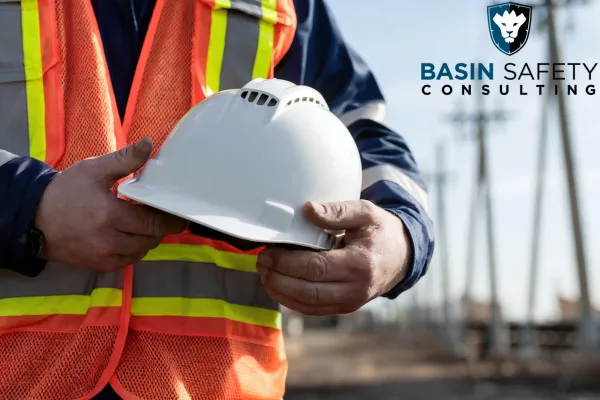
The Importance of PPE in Workplace Safety
Every day, thousands of workers face potential hazards—from falling objects and chemical exposure to loud noise and electrical risks. Personal Protective Equipment (PPE) serves as the last line of defense between a worker and a potential injury. Understanding the importance of PPE—and ensuring it’s used correctly—can mean the difference between a normal day at work and a serious accident.
What Is PPE?
Personal Protective Equipment (PPE) refers to clothing and gear designed to protect workers from workplace hazards. It minimizes exposure to injuries and illnesses caused by physical, chemical, biological, or mechanical dangers.
Common Types of PPE Include:
Head protection: Hard hats and helmets
Eye and face protection: Safety goggles and face shields
Hearing protection: Earplugs and earmuffs
Respiratory protection: Masks and respirators
Hand protection: Gloves for chemical or heat resistance
Body protection: Coveralls, vests, and flame-resistant clothing
Foot protection: Safety boots and non-slip shoes
Why PPE Is Important
PPE isn’t just a box to check for compliance—it’s a critical component of workplace safety.
Here’s Why PPE Matters:
Prevents Injuries and Fatalities
Wearing the right protective gear can prevent cuts, burns, fractures, and even life-threatening injuries.Protects Against Long-Term Health Risks
Some hazards—like noise, dust, or chemical exposure—can cause long-term health issues. Proper PPE reduces the risk of chronic illness.Ensures Regulatory Compliance
OSHA and other safety organizations require employers to provide and enforce PPE use. Non-compliance can lead to penalties and shutdowns.Promotes a Culture of Safety
When workers consistently wear PPE, it encourages everyone to take safety seriously and look out for one another.
Proper Use and Maintenance of PPE
PPE is only effective when it’s used correctly and maintained properly.
Follow these best practices to ensure maximum protection:
Inspect PPE before each use for cracks, tears, or damage.
Clean and store equipment in a dry, safe place.
Replace damaged or worn-out items immediately.
Ensure proper fit—ill-fitting PPE can cause more harm than good.
Train employees regularly on correct PPE use.
Tip: Conduct regular safety audits to confirm that PPE policies are being followed and updated as hazards change.
Encouraging PPE Compliance
Even with training and available equipment, some workers may skip PPE due to discomfort or time pressure. To improve compliance:
Lead by example—supervisors should always wear PPE.
Make PPE easily accessible.
Provide comfortable, properly sized gear.
Reinforce positive behavior through recognition and safety incentives.
Conclusion: Protecting People Starts with PPE
The importance of PPE cannot be overstated—it’s one of the most effective ways to keep workers safe and ensure everyone returns home injury-free. By investing in quality equipment, providing proper training, and maintaining a culture of safety, employers protect not only their workforce but also their business operations.
At Basin Safety, we specialize in safety training programs, PPE awareness sessions, and workplace hazard assessments that help organizations stay compliant and keep employees safe.
Call-to-Action (CTA):
👉 Ensure your team is protected.
Contact Basin Safety today to schedule PPE Safety Training or learn more about our Workplace Safety Programs.
Archives
Categories
Benzene Testing
Bloodborne Pathogens
Breathing Air Systems
Certification Process
Confined Space Attendants
Confined Spaces
Construction Equipment Operators
Electrical
Environmental Compliance
Excavation and Trenching
Fire Extinguisher Training
Forklift Operator
Hazcom Workplace Safety
HAZWOPER
Hearing Protection Training
Heavy Equipment
Hydrogen Sulfide
Lone Worker
Lone Worker Solutions App
Monitoring
Oil and Gas
Oil Drilling
Online Training Confined Spaces
Permit-required
PPE
Radiation Safety
Rescue Equipment
Rescue Team
Safety Consultants
Safety Devices
Safety Tracking
Safety Training
Site Inspections
Training 1
Training 2
Training 3
Training 4
Training 5
Uncategorized
Virtual Access to Safety Data
Waste Haulers
Confined Space Rescue
Mental Health
VISIT US
202 48th Ave SW, Williston, ND 58801
2740 Sims St. Suite B Dickinson, ND 58601
(701) 572-8140

BASIN SAFETY CONSULTING CORPORATION
Basin Safety believes in shared excellence. We are accountable to our core values:
● Pioneering Excellence Everyday
● Supporting each other to put customers first
● Asking the right questions, to ensure the greatest results.
Basin Safety Consulting © 2025. All rights reserved.
Powered By Upleveled Strategies

BASIN SAFETY CONSULTING CORPORATION
Basin Safety believes in shared excellence. We are accountable to our core values:
● Pioneering Excellence Everyday
● Supporting each other to put customers first
● Asking the right questions, to ensure the greatest results.
VISIT US
202 48th Ave SW, Williston, ND 58801
2740 Sims St. Suite B Dickinson, ND 58601
(701) 572-8140
Basin Safety Consulting © 2025. All rights reserved.
Powered By Upleveled Strategies

